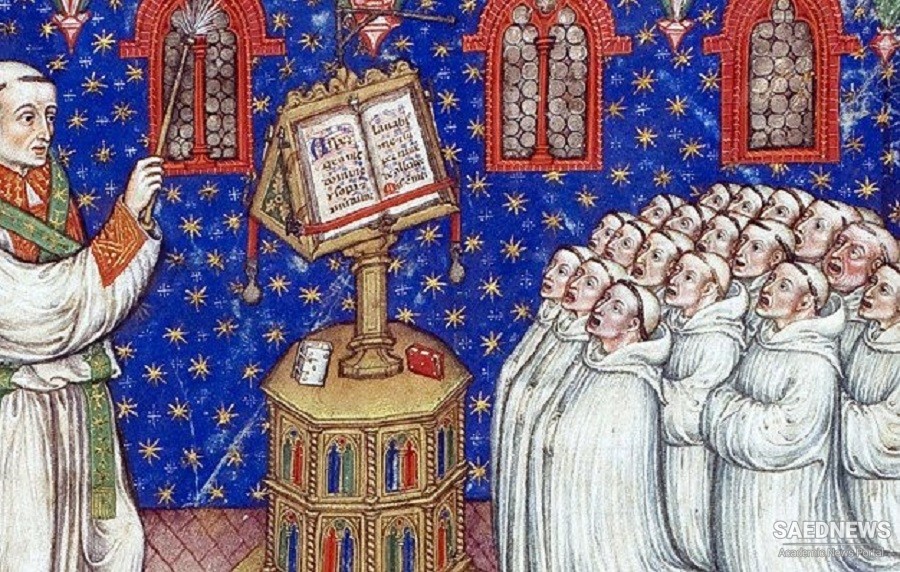Prior to the 11th century information regarding individual musicians is extremely scanty and uncertain. That music was made a subject of study in many ecclesiastical circles is clear, but the scope of thought about it was too narrow for the display of great originality or leadership. For convenience of reference, however, a few items are here collected. Many traditions point to the early establishment of a school for churchsingers at Rome, but whether this can be credited to Pope Sylvester (d. 335) is doubtful, or to any 'other before the 5th century. By the 9th century, however, such schools had become COIUIuon, not only in Italy, but in France and England, especially in connection with strong monasteries or under the care of energetic prelates. In France the Emperor Charlemagne (d. 814) was especially interested in fostering them. From about 700, hints begin to appear of the composition of melodies by various ecclesiastics, which are suggestive of the growing attention to the art. Flaccus Alcuin (d. 804), Abbot of Canterbury and later of Tours, supplies our earliest reference to the eight church modes; and he is echoed some decades later by Aurelian of Reome, Notker Balbulus (d. 912), a high-born and cultivated monk of St. Gall, is noted for his development of' sequences' as a part of the musical treatment of the Mass. At first these were prose hymns fitted to the rambling codas or , jubilations' that were added to the 'Alleluia' sung between the Epistle and the Gospel. Later the term was extended to metrical hymns, the writing of which, with appropriate melodies, became common in the later Middle Ages. (About 1000 sequences are now extant, but their prescribed use was discontinued in 1568, with four or five exceptions.) Notker also wrote upon th e theory of music. Hucbald (d. 930?) , a monk of 51. Arnaud, near Tournai, was identified with music all his life. Several works bearing his name are extant, though not all are surely his. These supply the earliest instance of staff-lines to indicate pitch (the words written in the spaces, without note-signs), use peculiar characters for the finals of the modes (often called' the Dacian notation '), and show a clear conception of part-singing in parallel motion.


 Medieval Contribution to Music Theory: Development of Notation
Medieval Contribution to Music Theory: Development of Notation














































